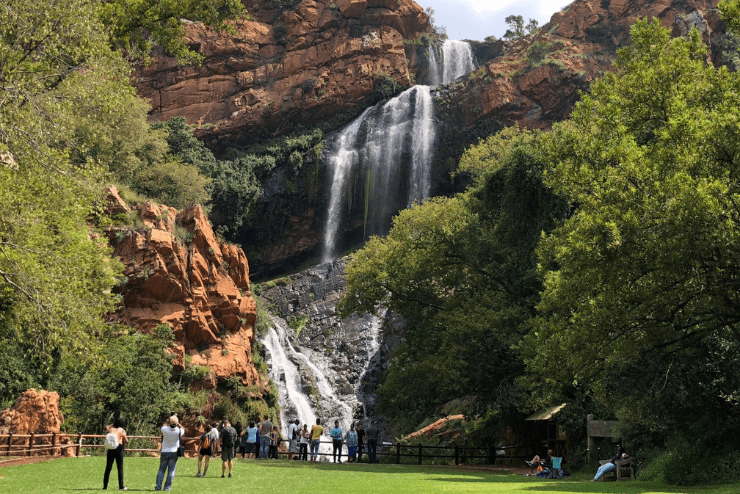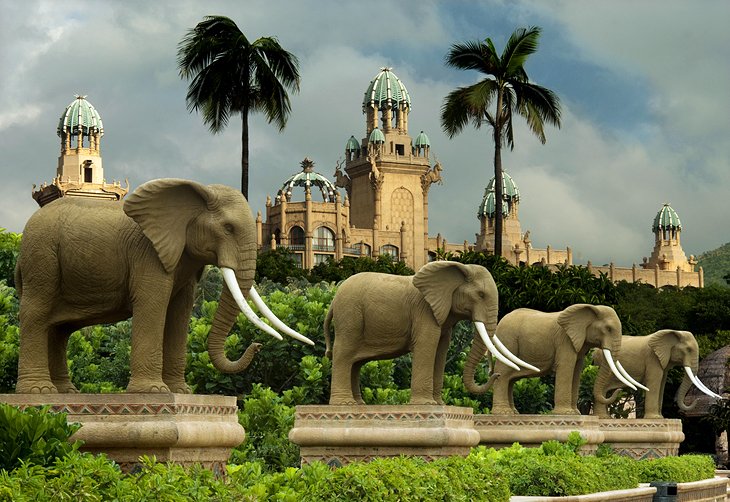Rumored Buzz on Johannesburg North Attractions
Rumored Buzz on Johannesburg North Attractions
Blog Article
The Best Strategy To Use For Johannesburg North Attractions
Table of ContentsJohannesburg North Attractions for DummiesSome Ideas on Johannesburg North Attractions You Need To KnowJohannesburg North Attractions Can Be Fun For EveryoneSome Known Details About Johannesburg North Attractions Fascination About Johannesburg North AttractionsAn Unbiased View of Johannesburg North Attractions
The city owes its area to the existence of a much more precious resource: gold. The city expanded on the side of the Witwatersrand Main Coral reef, a subterranean stratum of gold-bearing quartz-silica empire that arcs for thousands of miles beneath the Highveld. Most of the gold mines in the city discontinued procedure in the 1970s, but in its day the Witwatersrand gold sector made up even more than 40 percent of the world's annual gold manufacturing.Johannesburg has a temperate environment. Summertime temperature levels balance regarding 75 F (24 C); winter months temperature levels balance regarding 55 F (13 C) and only sometimes dip listed below freezing. The city appreciates regarding eight hours of sunlight per day in both winter months and summertime. Rainfall averages concerning 28 inches (700 millimetres) per year, but the total varies considerably from year to year.
What rainfall the city gets drops almost exclusively in the summer season, commonly in spectacular late-afternoon electric storms. Air contamination postures a significant problem, specifically in the winter season, when thermal inversions impede the westward flow of air from the Indian Sea. Pollution is most severe in the largely cleared up Black municipalities on the city's periphery, where several locals still depend on coal for fuel.

See This Report about Johannesburg North Attractions
The balance of the city is inhabited by whites. Holiday accommodation differs in personality and high quality. Soweto is notorious for its endless rows of municipally developed, two-room matchbox homes, yet it also has a couple of prosperous territories in addition to bursting squatter camps, where tens of thousands live without water, power, or cleanliness centers.
Physical growth, although somewhat restricted by transport, proceeded quickly as immigration to South Africa, and Johannesburg particularly, raised substantially. This problem was fixed in the 1930s when the auto was introduced in automation to South Africa. Cars were, for the a lot of component, constrained to the wealthy, and permitted them to transfer to the north of the city and commute into the centre.
Most inadequate suburban areas were mixed, with inadequate blacks and whites living together, although the wealthy suburban areas were usually booked for whites.
The previous system of eleven phoned number areas was reorganised in 2006. Marshalltown, as seen from the top of the Carlton Centre. The M1 and M2 run behind the buildings, and the southerly suburbs expand past the highway border. The inner city of Johannesburg is situated within the city's Region F. The approximated populace of the area is 200,000, [] but the variety of people residing in the central city on an informal basis is unidentified, as many are illegal aliens. Most higher-income citizens and white individuals have relocated to the northern suburban areas and have actually been replaced by lower-income black people. The joblessness, education and learning, and age profiles of the location are all unknown, because of the difficulty of getting trusted info concerning the location.
Johannesburg North Attractions - The Facts
Yeoville and Bellevue have a mix of apartment or condo structures and single residential devices on tiny great deals. The region lies on a hilly divide that runs from eastern to west. One of the most noticeable geographic attribute is Observatory Ridge, which is named for the large observatory situated on it. The leisure spaces are no much longer utilized, due to safety and security troubles.

Johannesburg North Attractions - The Facts
The eastern suburbs are some of the earliest areas of Johannesburg, there are large areas of Jewish and other European histories, the majority of the populace is English speaking. There are three golf courses as well as a number of protected ridges with viewsites.
The location is primarily composed of old "matchbox" houses, or read review four-room houses constructed by the federal government, that were constructed to supply low-cost lodging for black employees during discrimination. Soweto is an acronym, representing "South Western Townships". Road after road in this location is lined with matchboxes; nonetheless, there are a couple of smaller sized locations where prosperous Sowetans have constructed residences that are extra comparable in stature with those in more affluent suburbs.
Hostels are an additional popular physical feature of Soweto. Originally constructed to house male migrant employees, many have actually been enhanced as dwellings for couples and households. The N1 Western Bypass skirts the eastern border of Soweto. The suburb site here was not historically enabled to develop work centres within the location, so practically all of its citizens are travelers to various other components of the city.
Everything about Johannesburg North Attractions
The N1 Western Bypass connects the north suburbs with the north-western suburban areas. The houses in the north suburban areas are generally formal, with no substantial locations of informal real estate, or real estate that lacks an irreversible structure. Although this is a well-known location, there is a trend of land usage modification from residential to business, particularly along primary arterial roads and around well-known nodes.
The over here location is well connected to roadway networks, specifically along the north-south axis formed by the M1 and N1. Roadways to the east and west are less well established, as there are no highways travelling in that instructions. In the direction of the northern border of the city, the density of growth decreases, leaving large areas of primitive land around Midrand.
The Definitive Guide to Johannesburg North Attractions
, which is situated on a hillside ignoring the inner city and Hillbrow.
Report this page